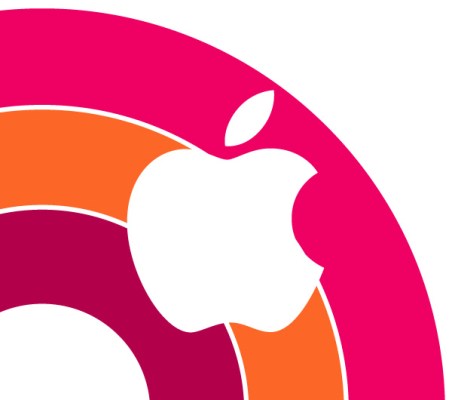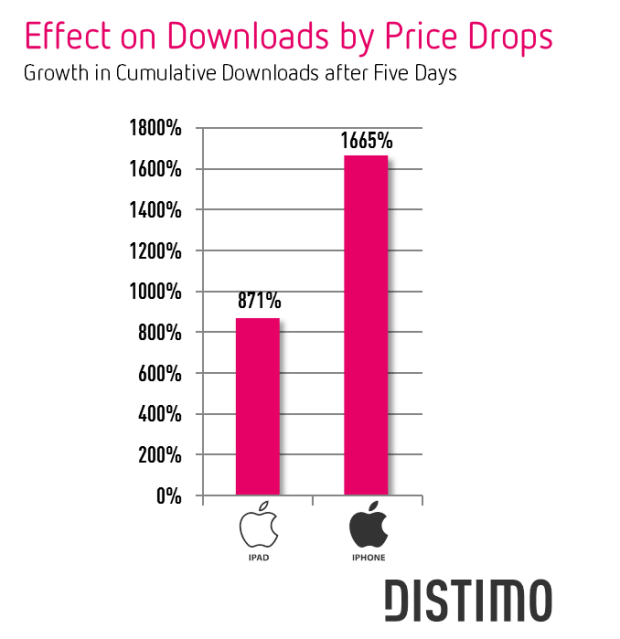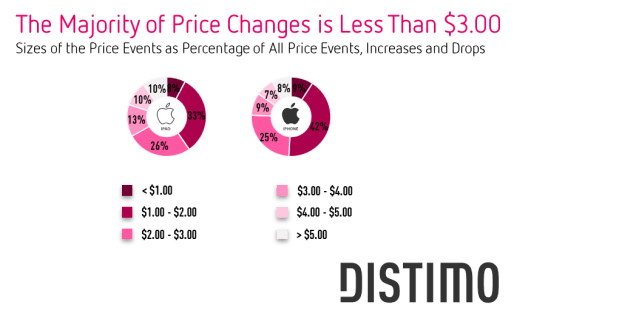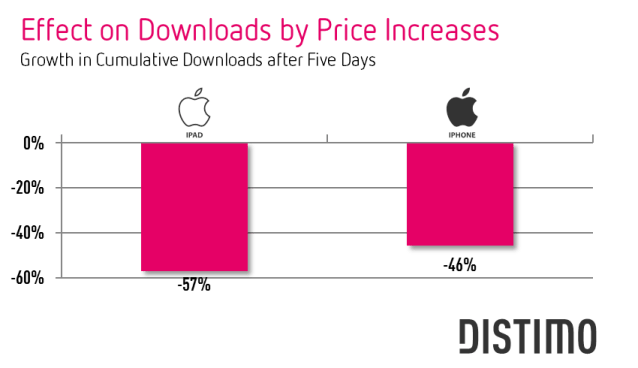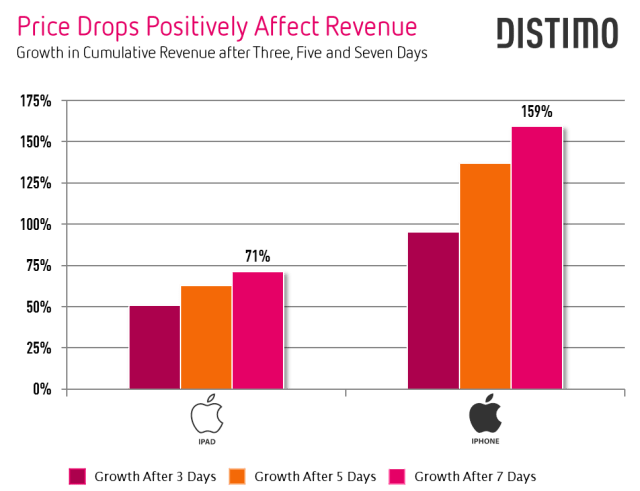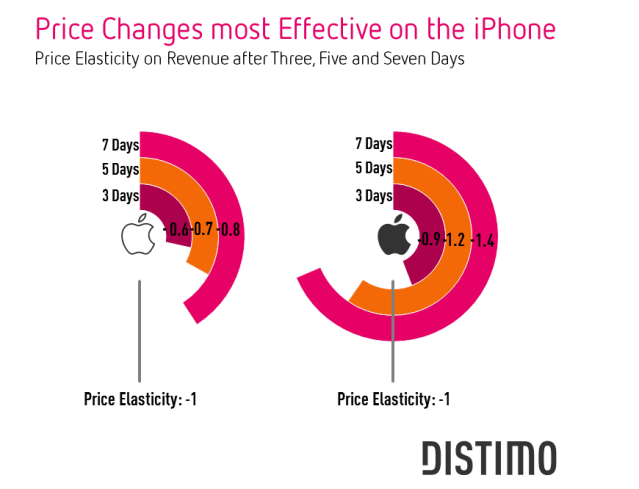App store analytics firm Distimo released a new report today which examines the effect that price changes, and specifically price drops, have on iOS app sales. When the price drops for iPhone apps, on average, cumulative downloads grow by 1,665 percent for five days following the decrease. Not surprisingly, a price drop is more effective on the iPhone App Store than it is on the iPad App Store, as the iPad is still often a luxury device or work tablet, where users are comfortable with paying for quality apps. On iPad, price drops increase downloads by 871 percent on average after five days, the report found.
App developers often use price changes to increase download volume, in an effort to move up the App Store charts. In December 2012, for example, Distimo found that 850 iPhone apps and 930 iPad apps had changed prices at least once, out of the some 12,000 apps that had ranked in the top 400 across 10 key Apple Apps Stores worldwide. The majority of all price changes is less than $3.00. The numbers skewed lower on iPhone, where forty-two percent of changes were in the range of $1.00 to $2.00, while on iPad 20 percent of apps had a change larger than $4.00. Only 15 percent of apps on iPhone had changes that large, meanwhile.
As noted above, price drops can dramatically increase download volumes, but the reverse of that – a price raise – doesn’t have the same level of impact when it comes to decreasing downloads. Instead, a price raise on the iPhone App Store would decrease download volumes by 46 percent. On the iPad App Store, that number is 57 percent. A slowing down, but far from a stop.
Although a price drop can help an app move up the charts, developers also hope that the increase in volume will also make up for the fact the price is lower. They hope to at least break even as the apps moves higher in rankings, if not grow their revenue. As it turns out, revenue growth does kick in around day 3 after the sale begins, Distimo says. Revenue in the App Store for iPhone went up by 95 percent at this point, and increased by 51 percent in the App Store for iPad.
What’s more interesting, perhaps, is that the revenue growth continued well into day 5 and day 7 as well, with increases of 137 percent and 159 percent, respectively, for iPhone app price drops. On iPad, those numbers are somewhat lower but still increases – 63 percent after 5 days, and 71 percent after a week.
This data is especially interesting in comparison with a similar study Distimo ran last year which looked at the top 100 grossing apps in the U.S. App Store. It too, found that price drops could boost revenue, but results were a mixed bag with some developers gaining, and others losing, which affected the averages. Also, price drops had to be substantial (40 percent or more) to have any serious impact on revenue gains. This year, the company instead sourced data from the top 400 overall apps from the App Stores in 10 key markets (U.S., Canada, U.K., Germany, France, Italy, Russia, Australia, Japan, and Korea), and used its new market analysis service AppIQ to do so.
In terms of revenue impact, Distimo’s latest report found the iPhone and iPad App Stores to show more price elasticity. On iPhone, a 1 percent drop led to a 1.2 percent increase in revenue after 5 days. On iPad, a 1 percent drop lead to a revenue gain of 0.7 percent, to give you an idea. But according to researcher Tiuri van Agten, the shift in methodology also increased the effect because applications with lower download volumes and revenues are included, which then increased the relative growth figures.
When examining which top 10 apps benefitted the most in December from price drops, the majority on iPhone were in the games category, while iPad had a slightly more diverse mix which also included a couple of educational apps for kids, for instance.
Google Play was not a major focus of this month’s report, but fortunately, Distimo competitor App Annie put out its own deep dive yesterday which examined some aspects of Google Play revenue growth. App Annie found that Google Play app revenues doubled at the end of the 2012, however Distimo says that price drops in this store – while still having an effect – are less powerful than they are in the Apple App Store. The company believes this is because it’s harder to reach the top charts of Google Play. This reduces the “ranking effect,” meaning that higher-ranked apps are more visible, so they are therefore downloaded more often, and generate more revenue than lower-ranked apps, disproportionately.
